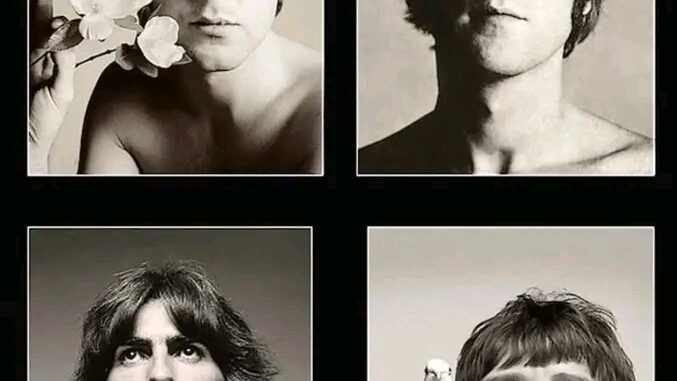
Musically and lyrically do you consider The White Album as the end of The Beatles psychedelic period or do you think it ended with Magical Mystery Tour and the songs from the Yellow Submarine soundtrack in late 1967?
The question of whether *The White Album* marks the end of The Beatles’ psychedelic period or if that phase concluded earlier with *Magical Mystery Tour* and the *Yellow Submarine* soundtrack is an intriguing one. To adequately address this, we should explore both the musical and lyrical characteristics of these works, their historical context, and how they fit into The Beatles’ evolving artistic trajectory.
**The Psychedelic Era in The Beatles’ Discography**
The Beatles’ psychedelic phase is generally associated with their experimentation with studio effects, surreal lyrics, Eastern influences, and an overall sense of musical and lyrical experimentation. This period roughly spans from 1966 to 1967, with *Revolver* (1966) often considered a pivotal album showcasing their move into psychedelia, followed by *Sgt. Pepper’s Lonely Hearts Club Band* (1967), which epitomizes the genre with its elaborate production, abstract lyrics, and concept-driven approach.
**Magical Mystery Tour and the Yellow Submarine Soundtrack (Late 1967)**
*Magical Mystery Tour*, released in late 1967 as both a film and an album (in the UK, the album combined songs from the film and other recordings), is widely regarded as a psychedelic masterpiece. The album features songs like “Strawberry Fields Forever,” “Penny Lane,” “I Am the Walrus,” and “All You Need Is Love.” These tracks are characterized by their whimsical, surreal lyrics, innovative studio techniques, and a sense of childlike wonder and experimentation. For example, “I Am the Walrus” is filled with nonsensical imagery and layered production, embodying psychedelia’s experimental ethos.
Similarly, the *Yellow Submarine* soundtrack (also from late 1967) contains songs like the title track “Yellow Submarine” and “Only a Northern Song,” which continue the psychedelic and playful aesthetic. While not as revolutionary as *Sgt. Pepper*, these works are nonetheless imbued with the hallmarks of psychedelia—fantastical lyrics, eclectic sounds, and studio experimentation.
**The White Album (1968): A Divergence or a Continuation?**
Released in 1968, *The White Album* (officially titled *The Beatles*) is often seen as a departure from the psychedelic sound. It is a sprawling double album with a wide array of styles: folk (“Blackbird,” “Mother Nature’s Son”), rock (“Back in the U.S.S.R.,” “Helter Skelter”), blues (“Yer Blues”), country (“Rocky Raccoon”), and experimental sound collages (“Revolution 9”). Lyrically, it ranges from personal and introspective (“Dear Prudence,” “Julia”) to satirical and political (“Piggies,” “Revolution”).
Musically and lyrically, *The White Album* seems less centered on the psychedelic aesthetic. While some tracks—like “Within You Without You” by George Harrison—do incorporate Indian instrumentation and Eastern influences, they are relatively few compared to the overall diversity of the album. The dominant mood is more introspective, raw, and eclectic than the heavily studio-produced, surreal psychedelia of 1966-67.
**End of Psychedelia?**
From a chronological standpoint, the transition from the late 1960s psychedelic works to the more eclectic, sometimes raw, and introspective style of *The White Album* suggests that the psychedelic phase was waning. The band’s experimentation with elaborate studio effects and surreal lyrics reached a peak with *Sgt. Pepper* and *Magical Mystery Tour*, but by the time they recorded *The White Album*, they were exploring different musical landscapes, often with a more individualistic approach.
Lyrically, the psychedelic phase often involved abstract, surreal imagery that aimed to evoke altered states of consciousness—”I Am the Walrus” and “Strawberry Fields” being prime examples. In contrast, *The White Album* contains more personal, direct, and varied lyrical content, reflecting individual band members’ moods and personal experiences rather than collective psychedelic exploration.
**Counterpoints and Overlaps**
However, it’s worth noting that some elements of psychedelia persisted into *The White Album*. George Harrison’s song “Blue Jay Way” (recorded during the *Magical Mystery Tour* sessions but included in the album) is a clear psychedelic piece with its drone-like quality and mystical lyrics. Additionally, the Indian-inspired “While My Guitar Gently Weeps” and “Long, Long, Long” showcase Harrison’s ongoing interest in Eastern sounds—a psychedelic influence, but more subdued and integrated into a broader musical palette.
**Conclusion**
Considering both musical and lyrical aspects, *The White Album* signifies a stylistic departure from the heavily psychedelic works of 1966-67, rather than a continuation of that phase. It reflects a period of artistic exploration that is more eclectic, personal, and fragmented, marking the end of the Beatles’ intense psychedelic experimentation as a cohesive movement. The psychedelic period, characterized by surreal, studio-driven soundscapes and lyrics, is most vividly represented in *Magical Mystery Tour* and the *Yellow Submarine* soundtrack.
In sum, the psychedelic era for The Beatles arguably culminated with *Magical Mystery Tour* and *Yellow Submarine*, which encapsulate the zenith of their psychedelic experimentation. *The White Album* then signals a transition—an end to the psychedelic chapter and a move into more diverse, individualistic musical and lyrical territory. It was the closing chapter of their psychedelic phase, paving the way for the more varied and often introspective works that would follow, such as *Abbey Road* and *Let It Be*.
**In essence:** *Magical Mystery Tour* and *Yellow Submarine* are the definitive psychedelic works of The Beatles, with *The White Album* marking the end of that intense period of experimentation.
Leave a Reply